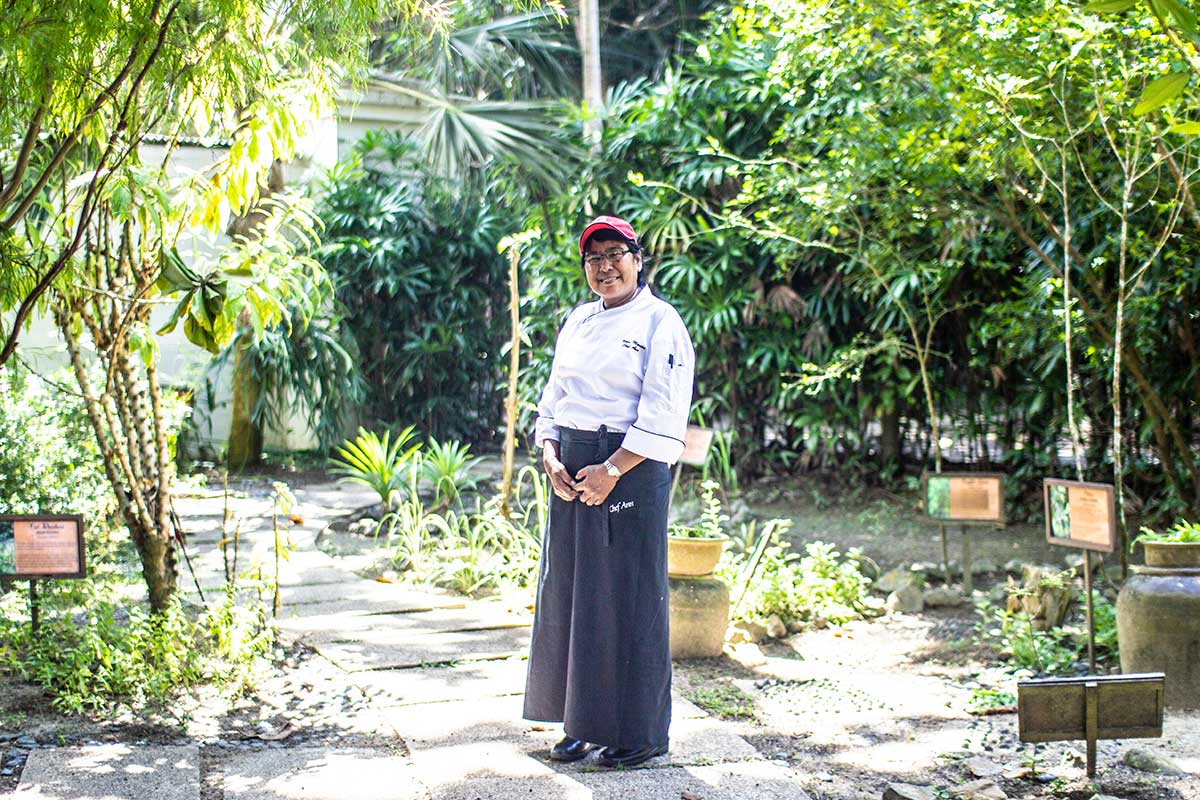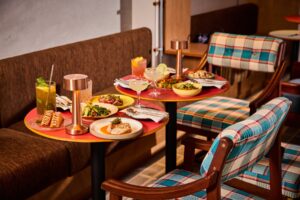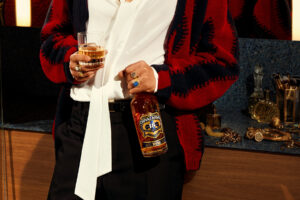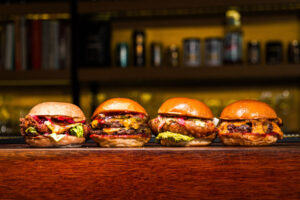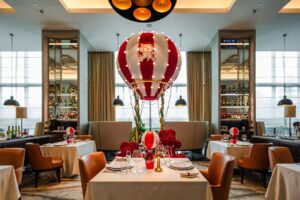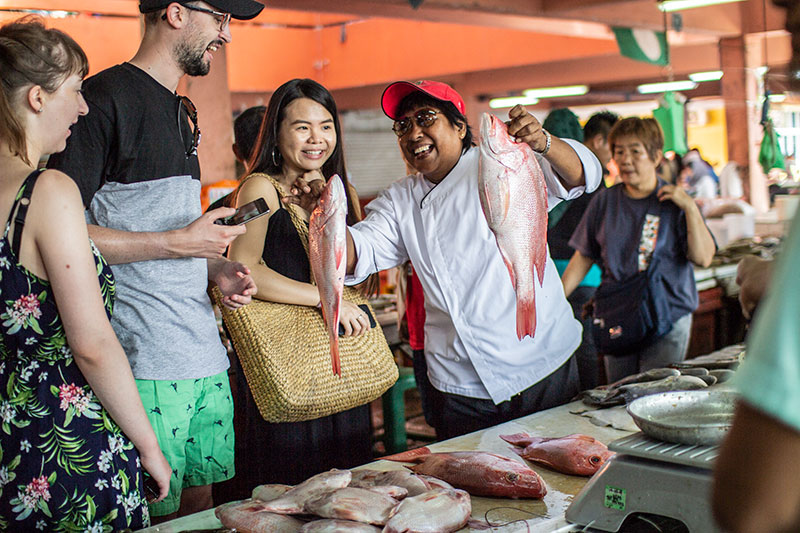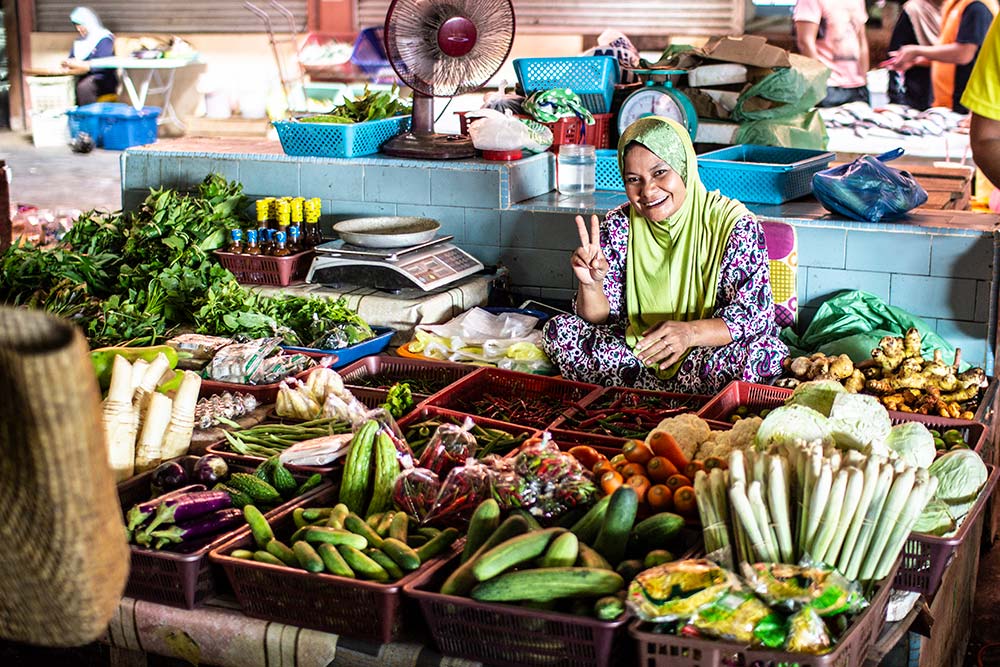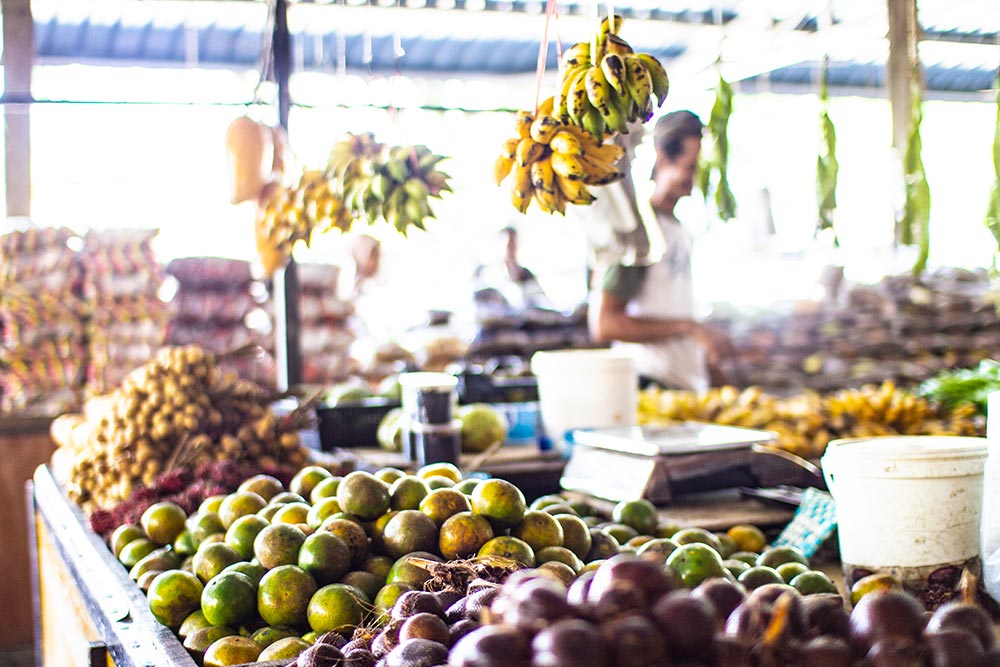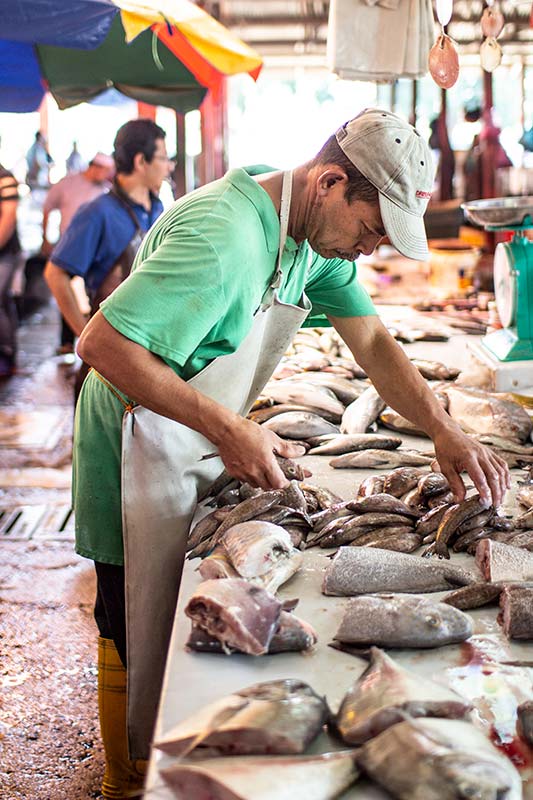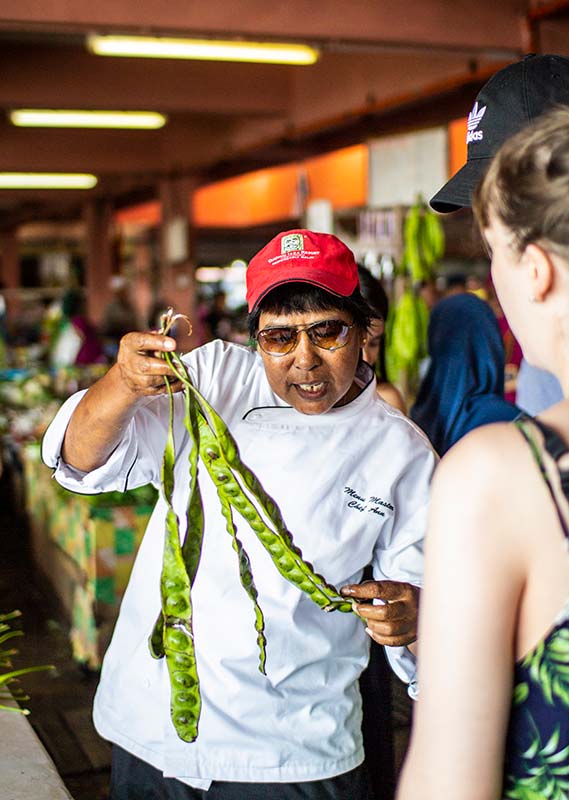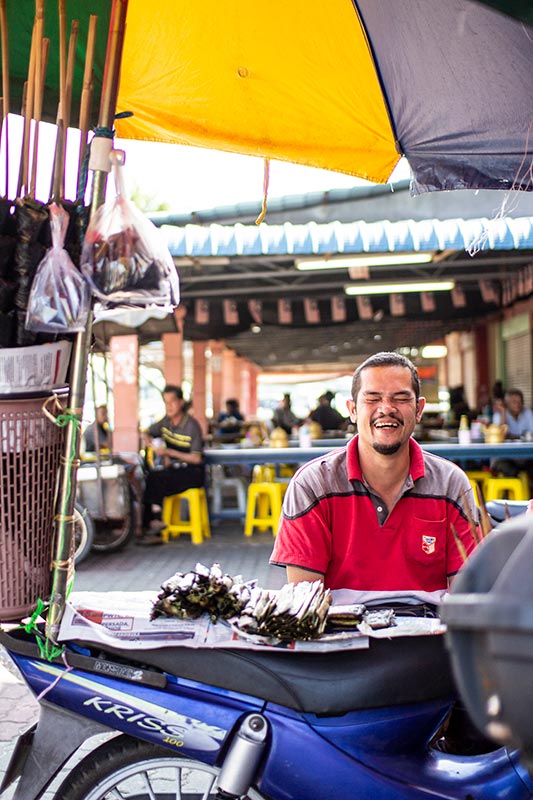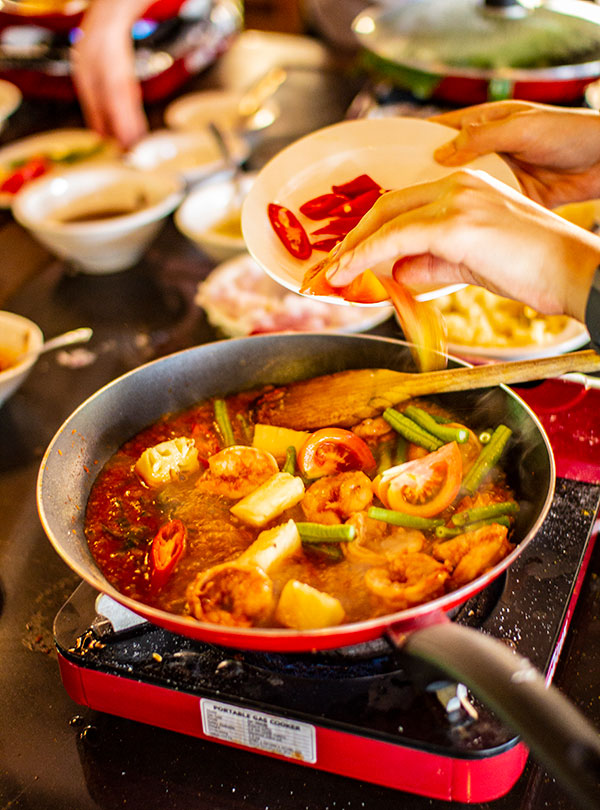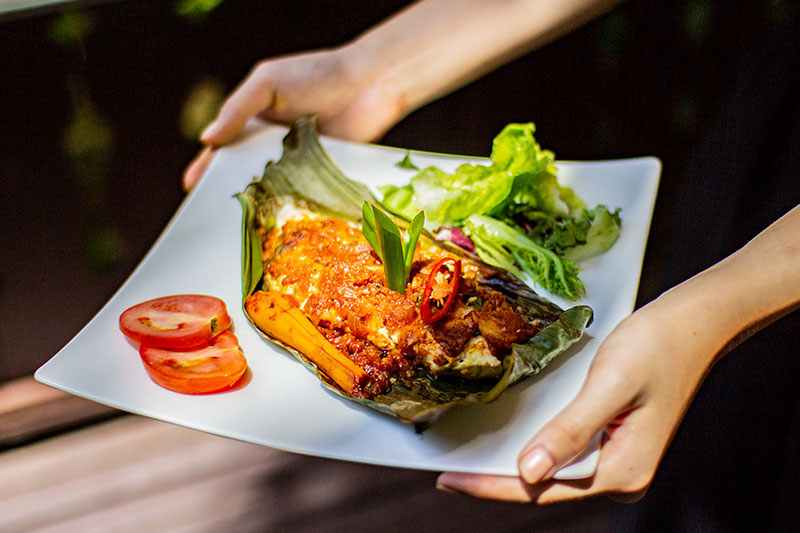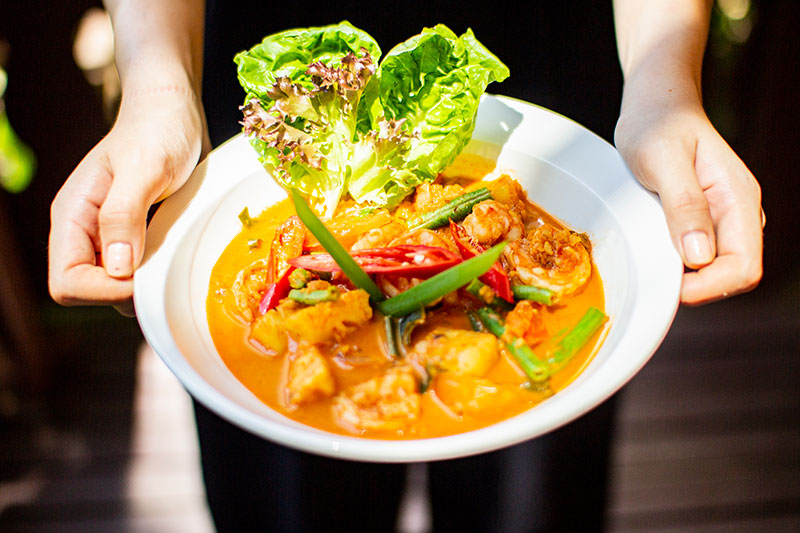![]()
We set out to discover the secrets of a Malay kitchen during our stay at Tanjong Jara Resort under the tutelage of its head chef and Menu Master, Chef Ann.
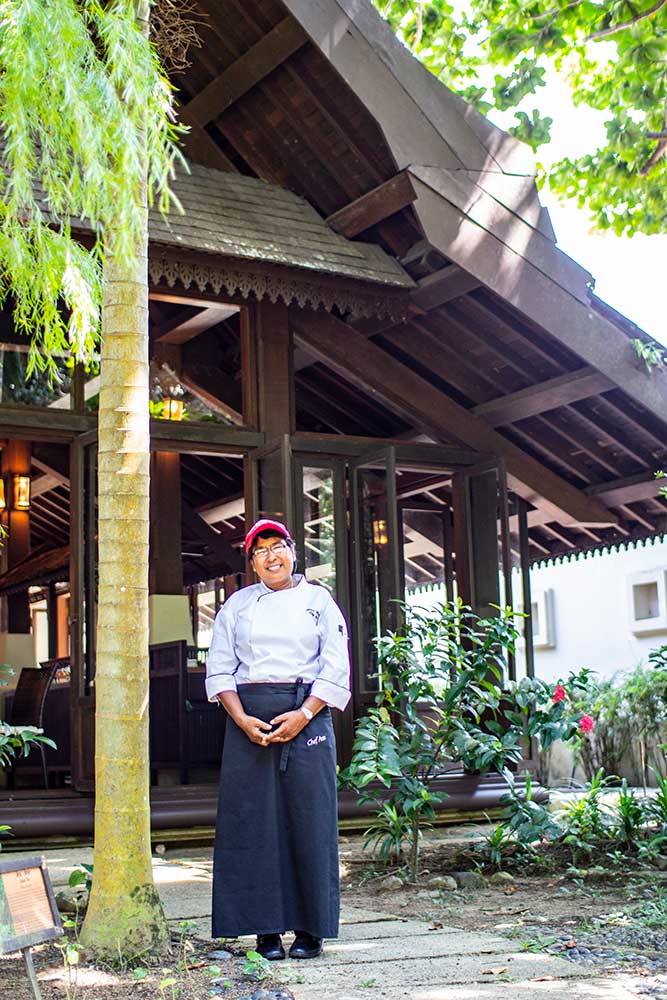
Malaysian cuisine is perhaps one of the hardest to define because of its close correlation to our multi-faceted identity. There’s so much more than the usual Malay-Chinese-Indian taxonomies (as The Rojak Projek have zealously demonstrated), but even the three are unequivocally diverse in themselves.
Let’s take Malay cuisine for example, which differs according to their geographical locations on the archipelago. Northern states like Penang and Kedah are known for their sharp, spicy tangs influenced by the neighbouring Thailand. Malacca’s take is interconnected with Peranakan cuisine as well as rempah from its history in the spice trade, whilst Negeri Sembilan draws references from Javanese and Minangkabau cooking.
The central region of Selangor and Pahang share similarities with the southern tip of Johor in offering creamier bases and street food favourites like satay and murtabak. Conversely, east coast states of Kelantan and Terengganu carry more oceanic flavours due to their proximity to the vast South China Sea.
And on that note, we set out to discover the secrets of a Malay kitchen during our stay at Tanjong Jara Resort in Dungun, Terengganu, under the tutelage of its head chef and Menu Master, Chef Ann.
Chef
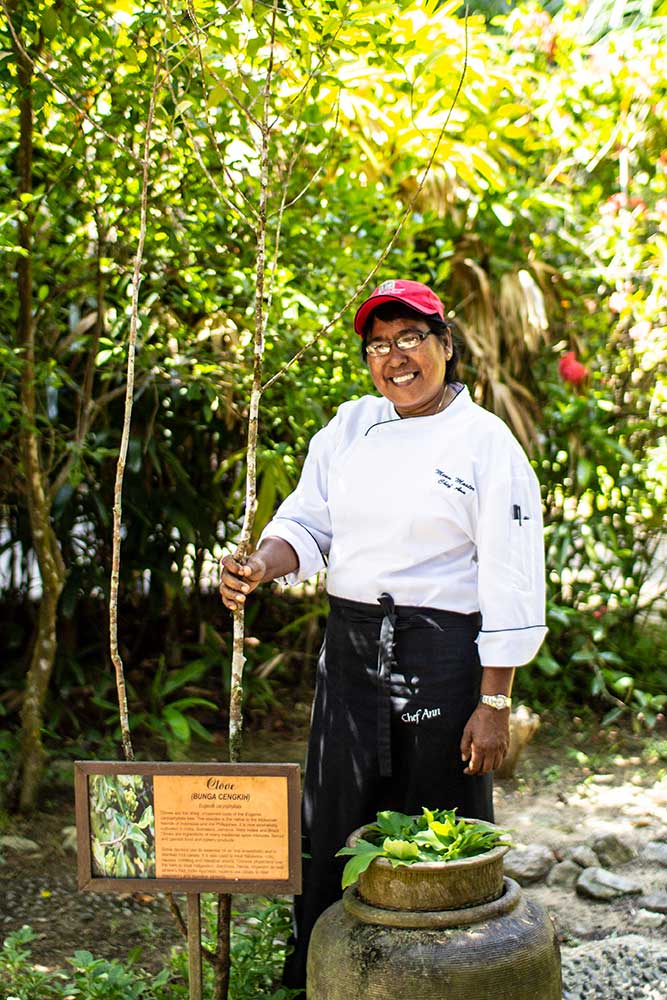
Born and bred in Dungun, Norbaya Mohamad grew up with seafood as her staple diet thanks to the fresh daily supply from the local market. However, she only learnt how to cook it relatively later in life than most stories you’d hear from heritage chefs.
“When I was 17, and I went to KL to further my studies in hospitality school. From there, I started working behind the kitchen in a hotel,” she tells of how her culinary journey actually began. “I remember my first cooking lesson – I grilled fish with turmeric, onion, garlic and lemongrass.”
Since then, she has worked as a chef for over 25 years in numerous establishments in KL, Kuantan and Tanjong Jara – going by the moniker of Chef Ann. Care to guess what’s still her favourite dish? “Fish!” she exclaims without second thought. “I can eat it for breakfast, lunch and dinner!”
Though more adventurous with the ingredients she uses to prepare the dish now, she maintains a preference for grilled, stir-fried and steamed styles of cooking.
That said, the primary focus of her current role has shifted from cooking to curating the menu at the resort’s Di Atas Sungei restaurant and offering food recommendations to guests, who often come from various parts of the globe.
She also teaches a cooking class comprising an educational trip to the largest morning market in Dungun followed by a step-by-step tutorial – which we had the honour of participating in.
Culture
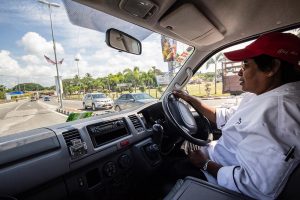
At the market, everyone knows Chef Ann.
Her attempt to be low-key by showing up with a cap and sunglasses covering her face all but draws more attention to her affable, witty character. That’s the mark of a humble kampung superstar chef right there.
The locals are no less welcoming to us, asking where we’re from and posing for the camera as we pass by. But the spotlight doesn’t deter her mission of acquainting us with the ingredients inside a Malay kitchen in between exchanging quick hellos with the vendors.
“See, here we get so many fresh fishes everyday,” she points out as she animatedly picks up two large red snappers, adding with a wide grin, “We’re going to cook these later.”
She then walks us through the varieties of indigenous vegetables such as ulam raja (king’s salad) and petai (bitter beans), as well as native fruits, condiments and snacks such as tempoyak (fermented durian), budu (fish sauce) and keropok lekor (fish crackers).
You may also like: How Dewakan interprets modern Malaysian cuisine with local ingredients like ulam and kerdas
“We use a lot of herbs, spices and coconut milk – these are all basic ingredients in the Malay kitchen. The Westerners have their basil or rosemary. We use onion, ginger, garlic, lemongrass, galangal, coconut and chilli paste,” she informs.
Small food stalls give further insight into local breakfast options, including pisang goreng (crispy banana fritters) and sata (grilled spicy fish meat wrapped in banana leaf) – sold hot off a motorcycle.
By the end of our tour, we stop for drinks and a chat at a mamak stall nearby – as all Malaysians do – before heading back to the resort to put theory to practice.
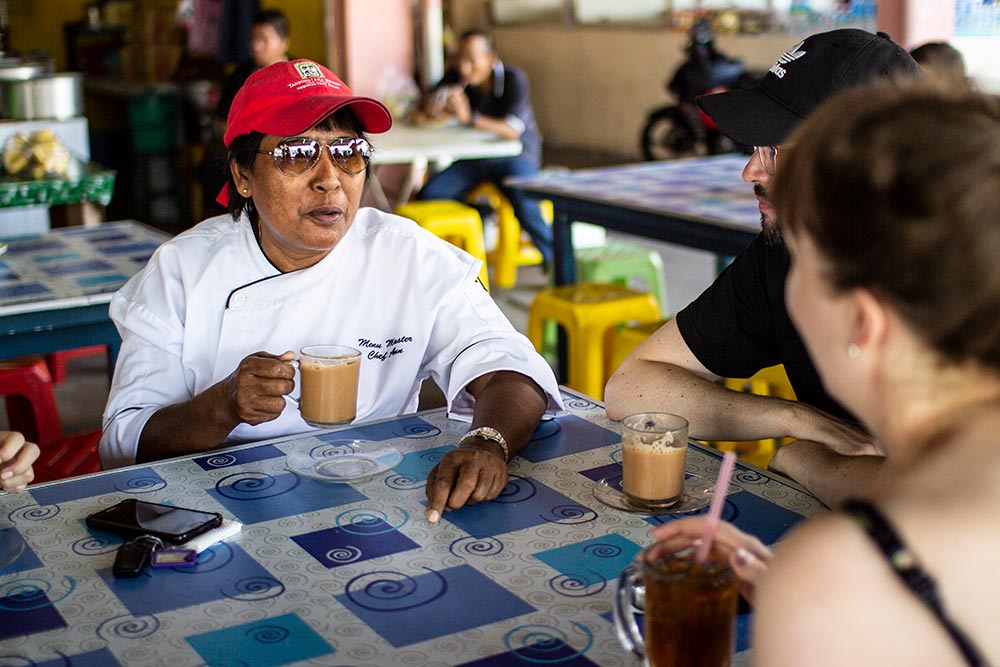
Cuisine
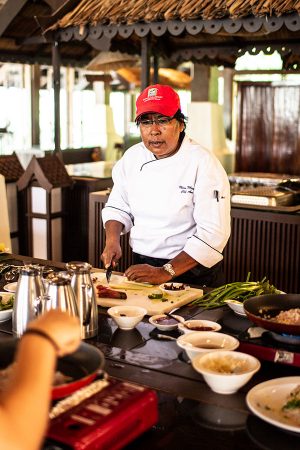
“Here at Tanjong Jara, our identity is ‘unmistakably Malay’ so we want to promote our local Malay food,” Chef Ann starts off our cooking lesson with a brief introduction.
“In Western cuisine, you tend to use more grilled and baking styles. In Asian and Malay cuisine, which we are cooking today, we use the traditional wok and oil,” she adds for the benefit of our fellow participants from the UK.
The ingredients and condiments lay ready on the cooking station before us – “There’s a lot of preparation in Malay cooking; it’s not as simple as Western cooking where you can add onion, garlic, salt and butter into a dish and you’re done” – in order to save time.
With that, we start the fire, pour the oil and begin cooking the two dishes that would make our lunch: assam fish and spicy prawns.
Chef Ann completes our meal with a stir fry vegetables dish and we sit down together to enjoy the fruits of our labour alongside a cool glass of roselle juice. At the end of our meal, we ask her what’s the most rewarding aspect of her journey as a chef.
“I believe it’s important for us to promote our local food because that’s what tourists come to Malaysia for,” she replies.
“And so far, my foreign guests have been telling be that they like the food here and I can also see it when they learn to cook during my classes, which makes me very proud.”

Photography: Gan Yew Chin




